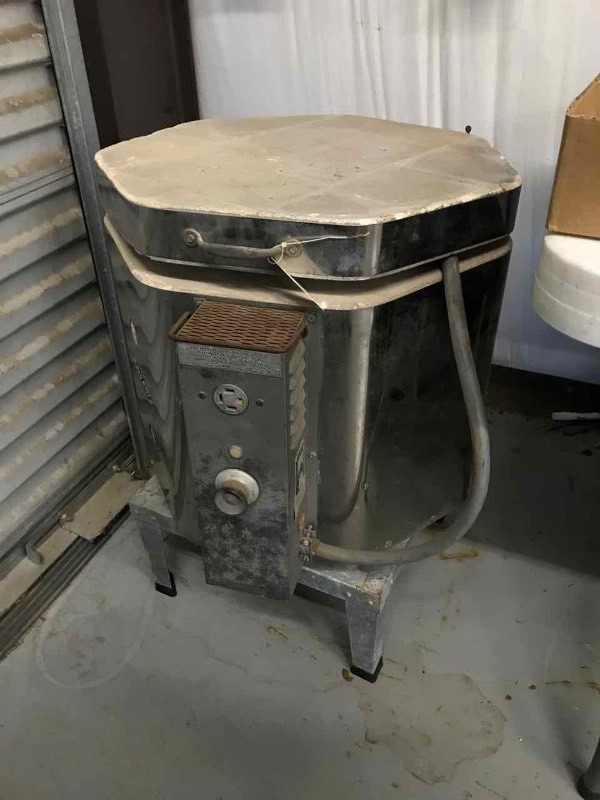Table of Content
This expansion and contraction can slack its band clamps, so you should tighten these clamps occasionally to avoid any problems. The control screen will give a better idea of the kiln’s internal temperature. However, it would be best to wait until the temperature comes down under 125°F (51.7°C) before you open the lid and see the final product. Pottery kiln peepholes were made to allow the potter to peep at their pottery and pyrometric cones while firing. They also allow the fumes and gases generated inside to flow out.
If a kiln has been heavily used, it may have trouble reaching its maximum firing temperature. They offer some of the easiest kilns to program and some of the most precise. They have also ventured into pottery wheel production with excellent products.
Can I use my oven as a Kiln?
To use a kiln at home you need 18 inches of clearance around the kiln. You also need to ventilate the heat and fumes from the kiln effectively. Additionally, your electricity supply needs to be enough to power the kiln. This is a much lower power kiln, using only 12 amps and 1440 watts with its 120V electricity. It uses less power because it has a much lower max temperature of 1800°F, only reaching the low range and cone 7-8.

Depending on how much money you have to invest in a pottery kiln, you can find one large enough to fire multiple pieces at a time. If you plan to turn your home pottery into a business, this could be great for you. As a rule, ceramic materials are classified according to the temperature at which they are fired so that their clay can mature.
Skutt KM FireBox 8×6 Kiln — best kiln for home studio
The volume of the internal chamber will determine how much you can fire at one time. But also, if the kiln is enclosed in, without enough space around it at all angles, you will get heat buildup. It’s one of the reasons why you should not use a kiln in a small enclosed space like a closet.

For more detailed information on kiln placement, size and installation, check outChoosing your kiln. Having a pottery kiln at home might affect your building’s insurance policy. You may want to check that your policy covers you for every eventuality. Or whether having a kiln invalidates your insurance, or increases your premium. Most modern properties will have a sufficiently up-to-date electrical supply. But some other properties won’t have enough amps to power a kiln.
Size
However, you have to make that the room the kiln is in is properly ventilated, since some of the fumes released during firing may be harmful. Moreover, you have to make sure that you have the required voltage and amperage available to run your kiln. Since we’ve already covered the size of your workspace, it is time for us to consider the size of kilns. The size you choose should depend on the space of your pottery studio and the size or type of pottery you are going to be working with.

Almost all kiln manufacturers have their own particular controller options, but for the most part, other than special features, they function much the same. Beyond this, most circuits in U.S. homes are only rated for amps. Even if you have a power source available at the correct voltage, it can still be advisable to consult an electrician before installing your kiln. You have two basic choices in heat sources in kilns; gas or electric.
Can you put a kiln in a garage?
However, these kilns operate at a very high temperature, and you should be careful when using them. Whilst $2500 is much cheaper than a home extension or moving house, it is still a considerable amount of money. In fact, the studio cost more than the kiln itself, so it really was a commitment. However, I was already fed up with having my pottery wheel, shelves, and clay, etc. in my home.

So, you can continue to work in there comfortably as the kiln fires. Some potters are willing to take the risk and have a kiln in their kitchen. Other potters are adamant that for health and safety reasons, this is really not a good idea. In the interests of transparency, I have to say, I’m in the latter category. Even small kilns are large, hot, and use a lot of energy to run. So, you need to have a think about where and if they are suitable for your home.
The best example of this is a pottery kiln, which turns clay into pottery and makes it strong and solid. Without a kiln, the clay would not be able to keep its proper shape. Technically speaking, it does say that these are for dolls and jewelry, but many potters that I know will usually use these as tester kilns.

Any kiln beyond these sizes would be considered commercial or industrial-sized. For round or oval kilns, they are listed with the diameter of the opening being listed first with the depth of the chamber being the following number. An 8 x 8 kiln would have a mouth that is 8 inches in diameter and eight inches deep. The heat from the burners is forced to travel around the chamber and then forced to flow through the chamber to reach the flue. This flue can be opened or closed to control both the temperature and the atmospheric pressure inside the kiln.
When kilns are in use firing pottery, they will emit fumes and gases. These are toxic fumes that will need to be vented away from the kiln and out of the room. And I only named the wheel and the kiln, I didn’t mention the glazes, or the clay.
Don’t forget to double-check what temperatures your glazes require, too. Sometimes the temperature needed to apply a glaze can be higher than the temperature needed to fire the clay. When picking between a top-loading and a front-loading kiln, it’s crucial to consider your height and lower back. Top-loading kilns are less expensive, but they might be challenging to deal with if you don’t have a lot of height on your side. There are two peepholes to look inside without losing any heat. The Iguana fires to cone ten and has a pre-programmed cooldown.
Craftsman kilns vs. professional ceramic kilns
Primarily, the size of the kiln you chose should depend on the types of projects you intend to do, as well as the space you have available for the kiln itself. Smaller kilns (up to 9” x 11”) are best for firing beads, doll parts, small pieces, and test items, and are suggested for beginning ceramic artists. Household ovens and even commercial ovens are not designed to reach or withstand the temperatures that are required for firing clay. If you are on a tight budget slightly used kiln in good condition can often be found on Craigslist, eBay, and similar sites. Be aware though, that many will no longer be under warranty and electrical coils lose their efficiency over time.
Are you worried about them being too big or cumbersome for your cozy pottery studio? Stop worrying because some of the kilns in this review are ideal for tight spaces and are very portable. I’ll also list some dream kilns for those who are wanting to produce larger quantities or larger clay creations that wouldn’t fit in a tabletop kiln. Soul Ceramics has the largest selection of Evenheat and Jen-Ken ceramic kilns for sale at the guaranteed lowest prices. Whether you are looking to buy a small electric kiln or something larger for a professional studio, we can help you find what you need. There are many different types of pottery and ceramic kilns to choose from.

No comments:
Post a Comment